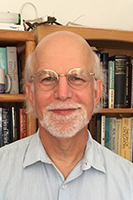Tutorial sessions showcase specific control topics that address real world control applications and how effective solutions are engineered by practicing engineers. This year we are pleased to offer four tutorial sessions.
WeB21 – Cooperation in Pursuit-evasion Differential Games
Organizer:
Eloy Garcia, Chair of IEEE Technical Committee on Manufacturing Automation and Robotic Control (MARC), Control Science Center of Excellence, Air Force Research Laboratory, Wright-Patterson AFB
Co-organizers:
Isaac E. Weintraub, Aerospace Systems Directorate, Air Force Research Laboratory, Wright-Patterson AFB
Meir Pachter, Department of Electrical Engineering, Air Force Institute of Technology, Wright-Patterson AFB
Time: 13:30 – 15:30, Wednesday, July 1, 2020
Location: Director’s Row H
This session will introduce the basics of pursuit-evasion problems. Pursuit-evasion problems provide a general framework that mathematically formalizes important applications in different areas such as surveillance, navigation, analysis of biological behaviors, and conflict and combat operations. Pursuit-evasion sets up two players or autonomous agents against each other; generalizations are typical in the sense of multiple players divided into two teams – the pursuer team against the evader team.
Strategy seeking in pursuit-evasion has been approached by imposing certain assumptions on the behavior of one player or team. However, many pursuit-evasion scenarios must address the presence of an intelligent adversary which does not abide by a restricted set of actions. The desire to design strategies that optimize a certain criteria against the worst possible actions of the opponent and that also provide robustness with respect to all possible behaviors implementable by the adversary led to the emergence of differential game theory. The central problem in pursuit evasion differential games is the synthesis of saddle-point strategies that provide guaranteed performance for each team regardless of the actual strategies implemented by the adversary. This is a challenging problem as it generalizes optimal control to simultaneously minimize and maximize a performance functional while satisfying implicit robustness requirements. Many questions and open problems remain in this area where the controls community has the potential for important breakthroughs and take differential games a leap forward both in theoretical and practical terms.
Presenters:
Isaac E. Weintraub, Meir Pachter, and Eloy Garcia: An introduction to pursuit-evasion differential games
Shaunak D. Bopardikar: k-Capture in Multi-agent Pursuit Evasion, or the Lion and the Hyenas
Meir Pachter: Multi‐Player Pursuit‐Evasion Differential Games
Zachariah Fuchs: Singular Surfaces within a Two Evader, One Pursuer Game
Canceled – ThB21 – Control of Tokamak Fusion Plasmas
Organizer:
Michael L. Walker, General Atomics
Co-organizers:
Federico Felici, EPFL
Eugenio Schuster, Lehigh University
Peter De Vries, ITER
Time: 13:30 – 15:30, Thursday, July 2, 2020
Location: Director’s Row H
Significant progress has been made in the last several decades since controlled magnetic fusion was envisioned as a potential commercial power source. The effort initially focused on achieving the necessary scientific understanding of fusion plasmas, and how best to produce energy generating fusion reactions within those plasmas. But as greater scientific understanding was gained, more attention gradually began to be paid to the technological issues associated with confining and controlling the plasmas creating these energy-producing reactions. Initial active control approaches consisted primarily of a small number of SISO PID controllers. More recently, as the number of plasma parameters desired to be controlled has increased, more sophisticated controllers have been designed, implemented, and tested on a number of experimental fusion devices worldwide.
Up to now, magnetic-fusion research devices have not been capable of hosting a plasma with the frequency of fusion reactions sufficient to produce more output power than is consumed in confining and controlling the plasma, a basic requirement for an energy-producing fusion reactor. This situation is about to change with the anticipated completion of the ITER tokamak currently under construction in southern France. ITER is projected to be able to produce approximately 10 times more energy output than it consumes when it is fully operational in approximately 20 years. Early operation of ITER will focus on learning how to produce and control plasmas that are far more energetic than in any existing magnetic-confinement device. The initial plasma control system is being designed now, including both the software architecture and the algorithms that will be used for control during ITER “first plasma” operation in approximately 2025. Energy content of plasmas produced during this phase of operation are small when compared with plasmas planned for later operation phases, which means that consequences of most possible control failures are similarly small. However, even during this early phase there are certain control failures that can lead to millions of dollars in device damage, so getting the control right is an important task.
Presenters:
Michael Walker, Introduction to Tokamak Plasma Control
Federico Felici, Control of magnetic fields and instabilities in tokamak fusion plasmas
Eugenio Schuster, Core Kinetic and Magnetic Control in Tokamak Plasmas
Peter De Vries, Exception handling by the Plasma Control Systems of Tokamaks
ThC21 – Control of Wafer Scanner: Methods and Developments
Chair:
Marcel Heertjes, Eindhoven University of Technology
Organizer:
Marcel Heertjes, Eindhoven University of Technology
Co-organizers:
Hans Butler, ASML
Stan van der Meulen, ASML
Rahul Ahlawat, CYMER
Time: 16:00 – 18:00, Thursday, July 2, 2020
Location: Director’s Row H
This tutorial session addresses control design aspects for wafer scanners, used in the semiconductor manufacturing industry, and the challenges for control design and development to meet the ever increasing demands on accuracy and speed. The mechatronic systems that will be discussed are: (a) the light source needed to generate the ultraviolet light that is used for wafer exposure, (b) the optical and metrology systems needed for accurate measurement and imaging, and (c) the reticle and wafer stage systems needed for accurate and fast positioning. The control challenges associated with these systems mainly involve dealing with: (a) rejection of high frequency aliased disturbances, (b) large-scale or fast-updated (state) reconstruction, (c) vibration control and isolation in view of structural vibrations and disturbances, (d) inherent design tradeoffs like Bode’s sensitivity integral and gain-phase relationship, (e) multivariable plant identification of (quasi-static) deformations and structural dynamics for point-of- interest control, and (f) thermal modelling, model reduction, and the control of (local) time-varying deformation.
Presenters:
Marcel Heertjes: General introduction wafer scanners
Rahul Ahlawat: Light source: generation and control of light
Hans Butler: Optics: Isolation and control of vibration
Marcel Heertjes: Stages pt.1: control of motion
Stan van der Meulen: Stages pt.2: control of thermal-induced deformation
FrB21 – Learning and Control: Opportunities and Challenges
Chair:
Mathukumalli Vidyasagar, Indian Institute of Technology, Hyderabad
Organizer:
Mathukumalli Vidyasagar
Co-organizer:
Behrouz Touri, University of California San Diego
Time: 13:30 – 15:30, Friday, July 3, 2020
Location: Director’s Row H
The recent past has witnessed an explosion of activity in Artificial Intelligence (AI) and Machine Learning (ML). AI/ML is easily the most “disruptive” technology of contemporary society. Yet much of the claimed progress rests on simulations that are not always repeatable, or fragile against small perturbations in parameters, or both. Consequently, the AI/ML community has begun to show some interest in developing some theoretical foundations for the subject. In response to this, the organizers of this tutorial session propose a session consisting of three forty-minute talks, all of them by leading experts in control and system theory who have also made substantial contributions to learning.
The objectives of the session are:
- To give the audience a sense of the opportunities for persons trained in control and system theory to contribute to the growth of AI/ML.
- To give a glimpse of the research frontier in these areas that can be successfully tackled using control / system theory, or allied approaches.
Presenters:
Mathukumalli Vidyasagar, Mathematical foundations of deep and reinforcement learning
George Pappas and Manfred Morari, Robustness analysis of neural networks via semidefinite programming
Pramod Khargonekar, Neuro-cognitive science inspired learning control architectures and algorithms
For more information, please contact:

Vice Chair for Industry & Applications
Mike Borrello
Philips Respironics
[email protected]
